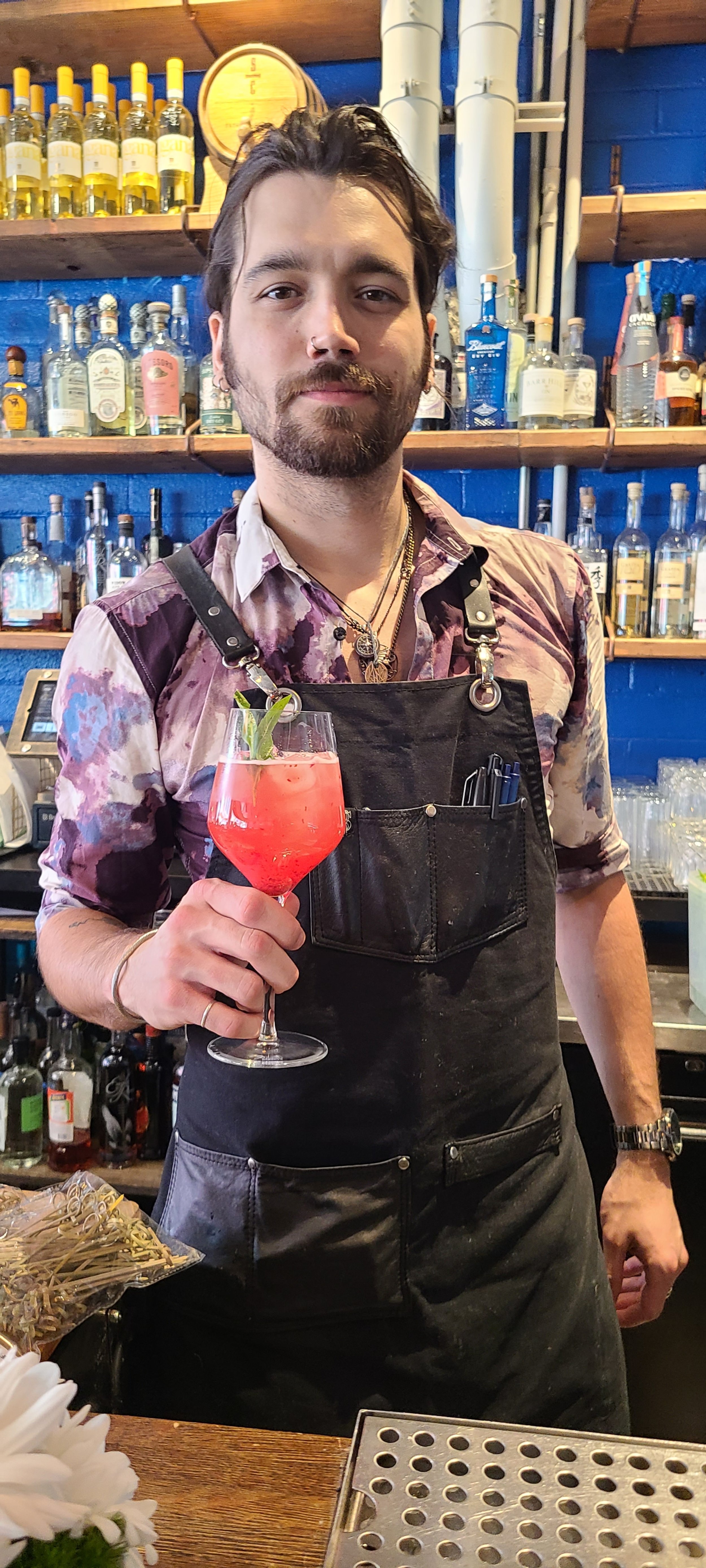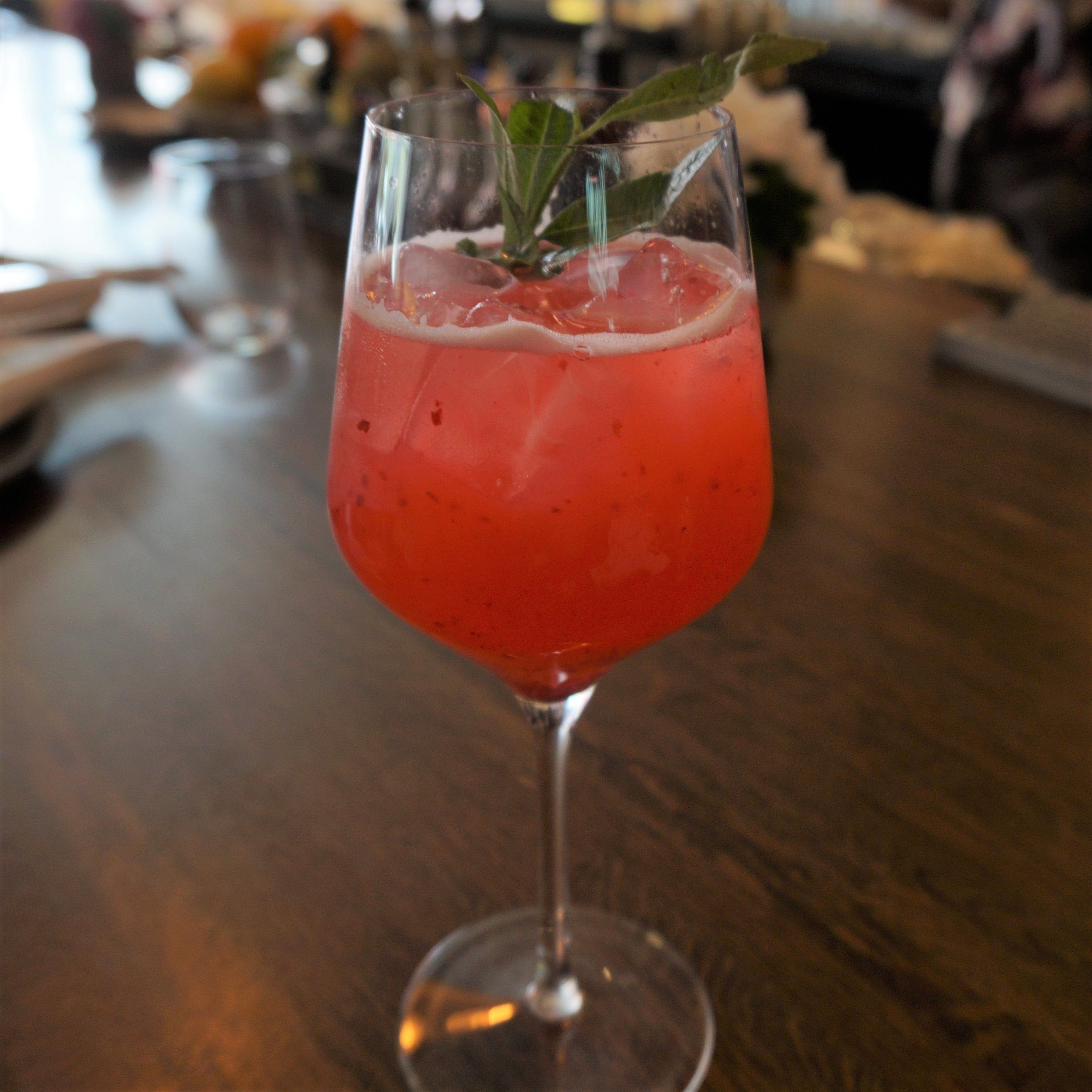From Behind the Bar: Tucker St. John of Esther's Kitchen
Bar manager Tucker St. John previously worked at On the Record and 18bin in Las Vegas before joining the Esther’s Kitchen bar team in June 2020.
How would you describe the bar at Esther’s Kitchen?
The bar at Esther’s Kitchen is a craft cocktail bar that highlights seasonal ingredients and lesser-known spirit producers in order to pair with our seasonal food menu and provide the guests an uncommon and delightfully new experience.
How do you stay up to date with current drink trends?
The biggest way I stay up to date with current trends, besides following the social media accounts of certain premier bars and spirits companies, is keeping an open dialogue with other industry professionals including distributors and reps. It’s a very nerdy experience in a way. We visit each other’s bars and chat online to see what each other is doing and creating. We discuss what we notice in customer trends, spirits that seem to blow up overnight, and the cool things we’ve seen in our recent outings.
What do you love and dislike most about the industry?
My greatest love in the industry is the people. At the end of the day, regardless of the drinks we make or food we serve, we are in the people business. I love talking to people, learning about them, and teaching them interesting things. I’ve met some of the best people I know through being in the industry. My least favorite thing about it is the outer perception that people have over it. The term “just a bartender” gets thrown around more often than it should. Some people that haven’t worked in the industry just can’t understand that what we are doing not only is a lucrative career, but something that requires more skill, craft, and dedication than they can ever know.
What’s the best thing to happen in your bar lately?
The best thing to happen in my bar lately was one of my newer bartenders figuring out their flow of making cocktails. You can teach someone the proper steps of service, but for someone to develop their own flow, it takes time. They have to figure out the steps to their own dance behind the bar. The bartender in question came to me and told me they feel like they are moving better, and to see them succeed and achieve a greater level of confidence was incredible.
What drew you to your current bar and what keeps you there?
I started working at another bar in the Arts District in Las Vegas, and all I heard about was Esther’s Kitchen. Everyone was talking about it, so I went one night to sit on the bar. I distinctly remember telling my friend who went with me, “I need to work here.” I immediately loved the program, the spirit selection, the level of detail in the cocktails, and the food. They were very evidently doing really innovative stuff, and the amount of personal touch allowed behind the bar drew me in. Individuality is very important to me. What keeps me here is everything that originally drew me, as well as the growth we are experiencing. In roughly a year, Esther’s Kitchen is moving to an adjacent space which is much larger. This will allow us to develop our program across the board, refine what we are already doing, and keep growing as a team. We look forward to solidifying our growing reputation and keeping our name on the map.
How often does your bar menu change?
Our menu changes seasonally to pair with our seasonal Italian food menu.
What drink have you added to the menu recently?
One of the cocktails I have included on our latest menu is called the Nomme de Plum. It’s a white sangria that utilizes grapefruit and fresh plum purée, finished off with lemon verbena as a lovely aromatic element.
Nomme de Plum
.5 oz vodka
4 oz Pinot Grigio
.5 oz Giffard Grapefruit Liqueur
.75 oz lemon
.5 oz simple syrup
1 oz plum puree
Lemon verbena
Pour over or stir with rocks in a white wine glass, garnish with lemon verbena sprig
What cocktail or spirits book have you read recently?
I’m sure I’m not alone in having read Death and Co. Welcome Home. It was a nice refreshing dip back into the cocktail world as the world at large healed. I’m also always revisiting Unvarnished by Eric Alperin. Part memoir, part cocktail book, it’s a relatable and honest delve into the world of opening and running a bar. I visit The Varnish every time I’m in LA.
Any techniques that you’ve been experimenting with?
On our current menu, we are featuring a cocktail called “In for a Penny” which contains prosciutto-washed mezcal. I’ve fat-washed cocktails before but using a freezing and thawing method in order to infuse the spirit while avoiding rendering the fat is new to me. It’s a lot of exercise for the palette to judge when it’s ready.
What fresh ingredients are you using this time of year?
This season we have fresh plums, cantaloupe, lemon verbena, and watermelon all featured on the menu.
Which new (or new to you) spirits brand(s) have you been using lately and why?
Right now, the Esther’s Kitchen bar team is playing with a line of non-alcoholic “spirits” by Lyre’s. We have seen an uptick in requests for non-alcoholic beverages, and rather than giving our guests the equivalent of a fancy fruit cocktail, we are exploring methods of delivering our guests an authentic, sophisticated experience sans-alcohol. The concept of crafting something like a Negroni or French 75 that looks and tastes like the real thing but can be enjoyed by anyone is an exciting venture. Lyre's Spirit Co. Dry London Spirit and Lyre's Spirit Co. Italian Orange both won Gold in the 2021 New York International Spirits Competition.
What’s the best way to build rapport with guests?
The best way to build rapport is to be real. People appreciate genuineness and candor. Of course, we all have our customer service personality, but I try to make sure I come across as my most genuine and relatable self. People feel comfortable when you’re leveling with them and make them feel heard, as if they’re talking to a “real person” and not someone just trying to sell them something.
How long is a normal shift and how many shifts do you work in a week?
As the bar manager my shifts vary. I’m always popping in to take care of things here and there. I have bartending shifts that will run about eight and a half to nine hours from set up to break down, but every industry professional knows that can easily get stretched if extra batches, juicing, or other prep needs to be executed. I work five or six days a week.



